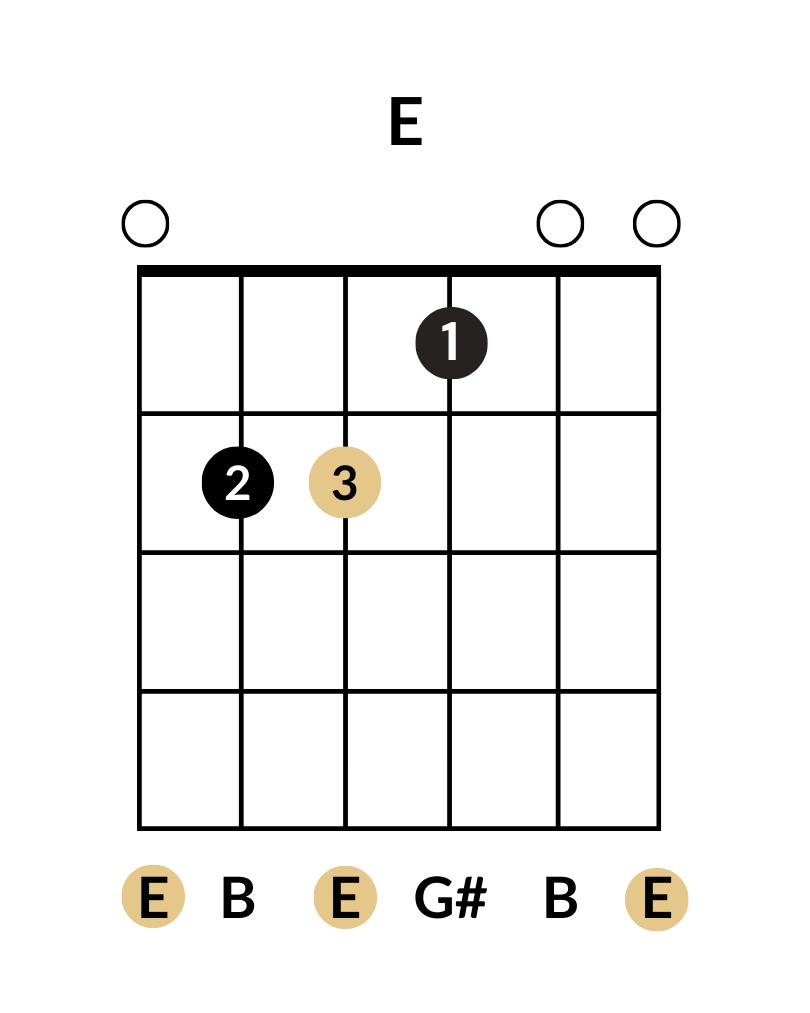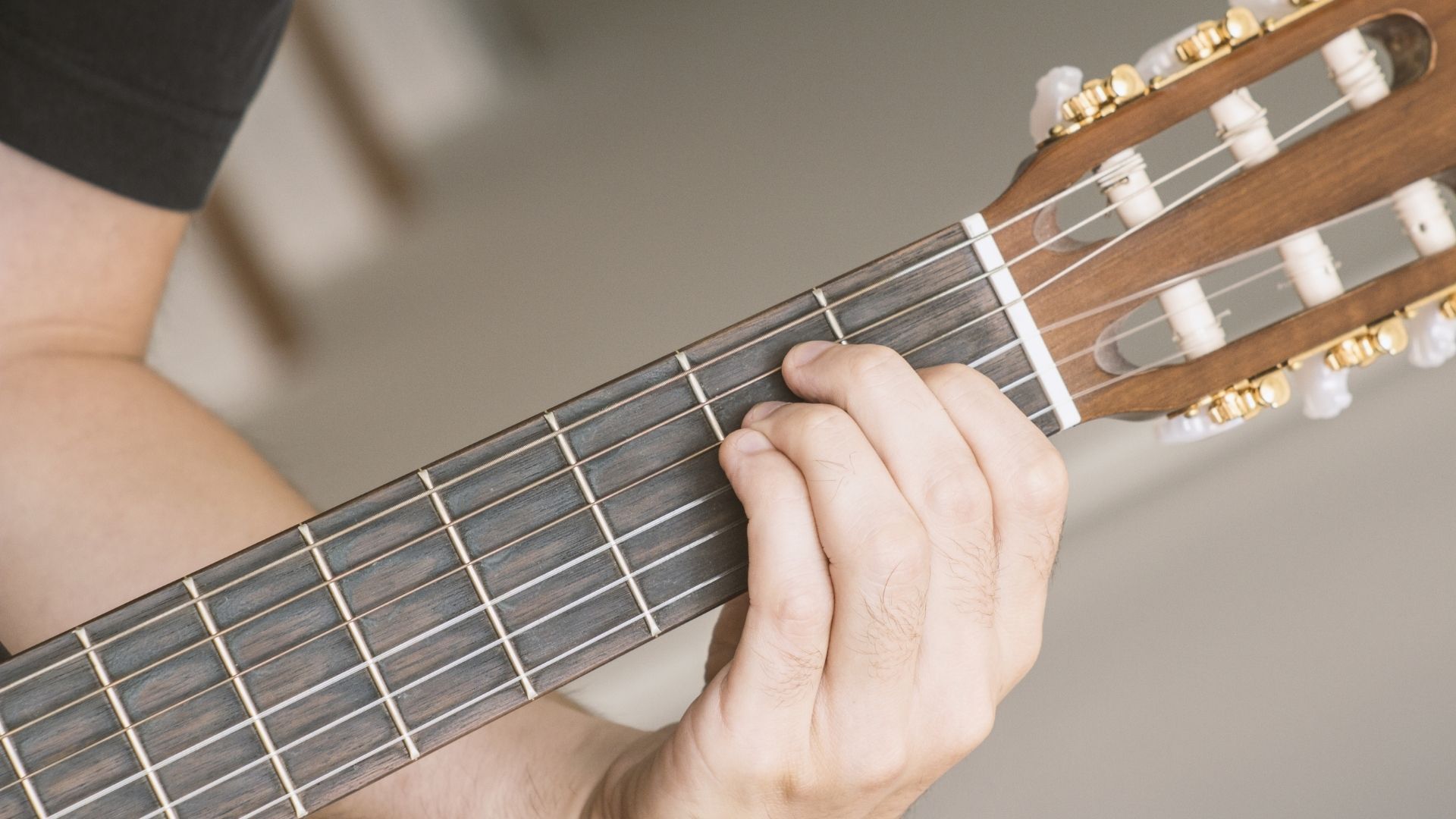The E major scale consists of the notes E, F#, G#, A, B, C#, and D#, and its key signature has four sharps. The relative minor of E major is C# minor, which shares the same notes but starts on a different root.
Why is E Major So Powerful on Guitar?
E major is an iconic key in rock, blues, and metal. The reason? The low open E string gives guitarists a deep, booming foundation. Whether you're strumming, fingerpicking, or shredding solos, E major offers a full-bodied sound that resonates with emotion and energy.
Because all six guitar strings can be used effectively in the key of E, it's frequently used for both rhythm and lead parts. The open E chord is often among the first chords learned by beginners due to its simplicity and rich sound.
Famous Songs in E Major
The E major key is a go-to for countless legendary songs. Here are just a few examples:
- "Lay Down Sally" – Eric Clapton
- "Pride (In the Name of Love)" – U2
- "No Woman No Cry" – Bob Marley (live version)
- "You Shook Me All Night Long" – AC/DC
- "Tears in Heaven" – Eric Clapton
These songs demonstrate the versatility of E major across genres from reggae to classic rock and blues.
E Major Key Signature
With four sharps (F#, C#, G#, D#), the key of E major can seem a bit more complex for sight-reading, but it's incredibly natural for guitar. Many chord shapes and scale patterns fall easily under the fingers in this key.

E Major Scale and Diatonic Chords
The E major scale consists of: E – F# – G# – A – B – C# – D# – E
The diatonic chords in E major are:
- E major (I)
- F# minor (ii)
- G# minor (iii)
- A major (IV)
- B major (V)
- C# minor (vi)
- D# diminished (vii°)
These chords form the basis for many common progressions in modern music, such as:
- I – IV – V (E – A – B)
- vi – IV – I – V (C#m – A – E – B)
- ii – V – I (F#m – B – E) (especially in jazz and R&B)
Cadences in E Major
Cadences help establish the key and provide resolution in music. In E major, the most common cadences are:
- Classic Cadence (IV – V – I): A – B – E
- Jazz Cadence (ii – V – I): F#m – B – E
How to Identify E Major in Sheet Music
When reading sheet music, E major is marked by four sharps. Listen for the strong tonal resolution on the E chord—this is often a clear giveaway that the piece is in E major.
Fingering the E Major Chord on Guitar
The open E major chord is one of the easiest and most resonant chords for guitarists. Here's how to play it:
- Place your index finger on the 1st fret of the G string
- Place your middle finger on the 2nd fret of the A string
- Place your ring finger on the 2nd fret of the D string
- Strum all six strings

You can also play variations like:
- E5 Power Chord: Useful for rock and metal
- E Barre Chord (7th fret, A string root): More advanced and powerful voicing
- E7 and Emaj7: For bluesy or jazzy textures
E Major Chord Attributes
- Intervals: 1 – 3 – 5
- Notes: E – G# – B
- Chord Symbols: E, Emaj
Relative Minor of E Major
The relative minor of E major is C# minor, which contains the same notes but centers on C#. The C# minor scale is: C# – D# – E – F# – G# – A – B – C#
Switching between E major and C# minor can add emotional contrast to your songs and solos.
Tips for Practicing in E Major
- Use Open Strings: Take advantage of the open E and B strings in riffs and solos.
- Master the Pentatonic Scale: The E major and minor pentatonic scales are essential tools for improvising.
- Explore Blues in E: E major is a top choice for blues—try incorporating dominant 7th chords and the E minor pentatonic for expressive lead lines.
- Transpose Songs to E Major: If you're performing solo or with others, transposing to E major can make certain songs easier to play.
Conclusion
The E major key is foundational for any guitarist. With its booming low end, comfortable chord shapes, and rich musical heritage, E major is your gateway to classic riffs, emotional ballads, and high-energy solos.
Continue Your Guitar Journey with Fretello
At Fretello, we help you learn faster and play better. Our Masterclass Series and Learn Path provide everything you need—from technique to theory—to grow as a confident, creative guitarist. Start for free and feel the power of the E major chord in your hands!